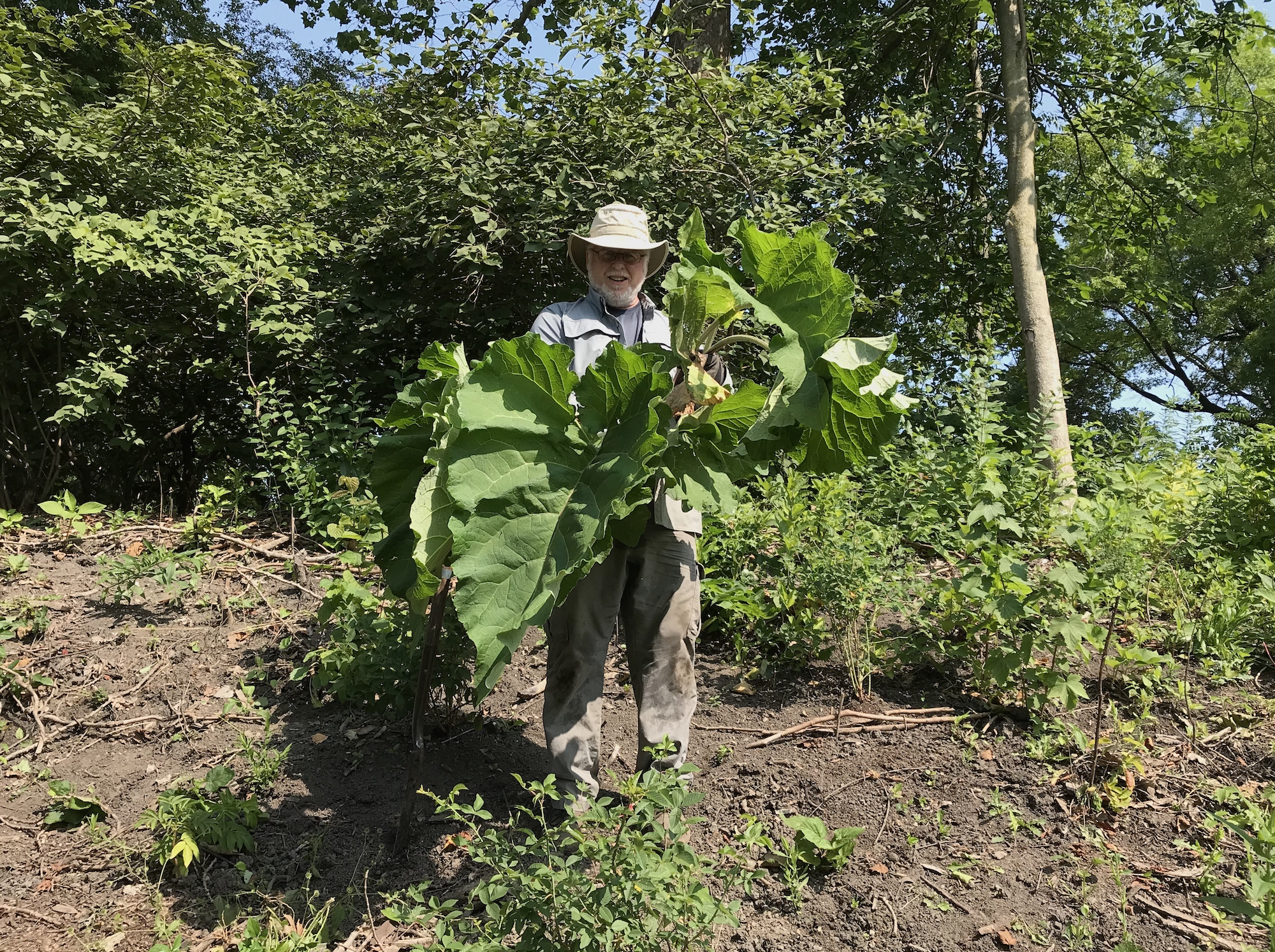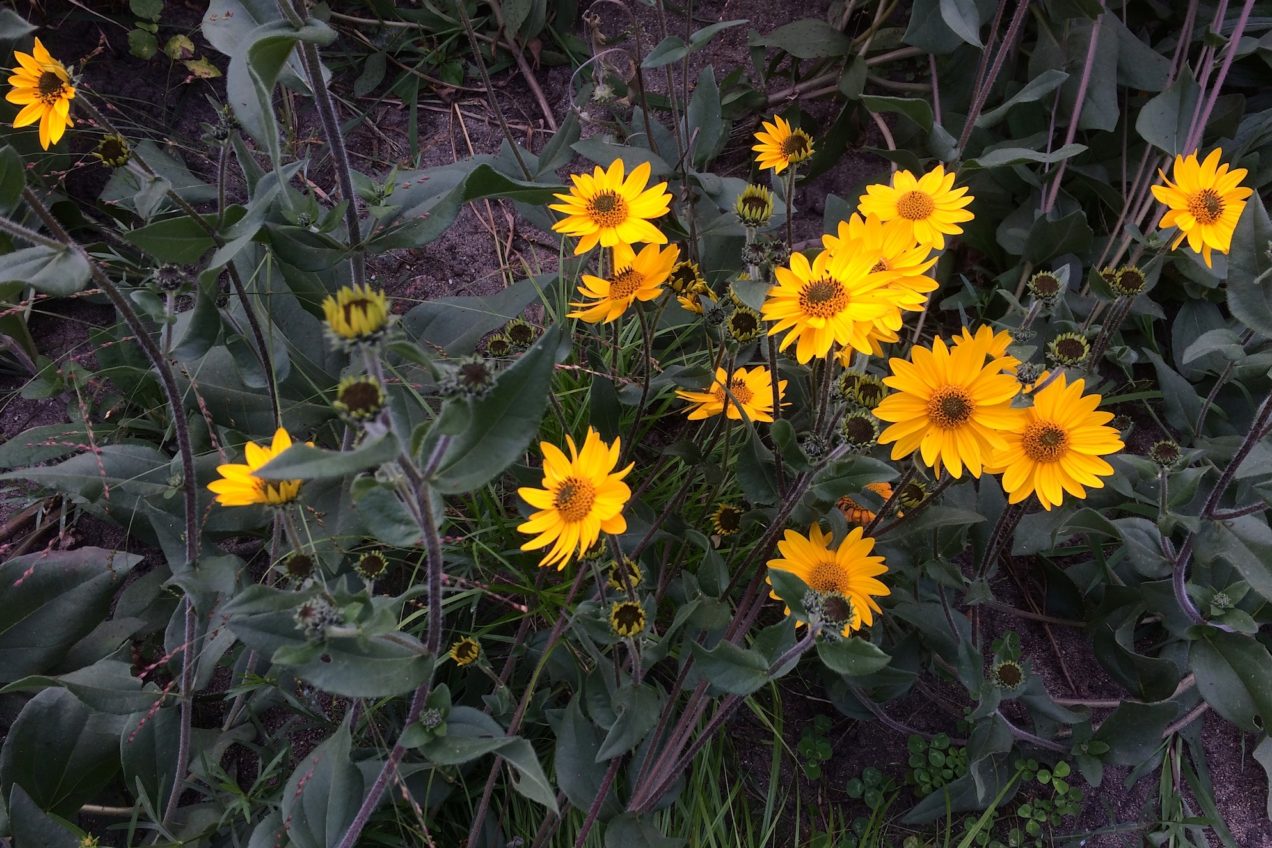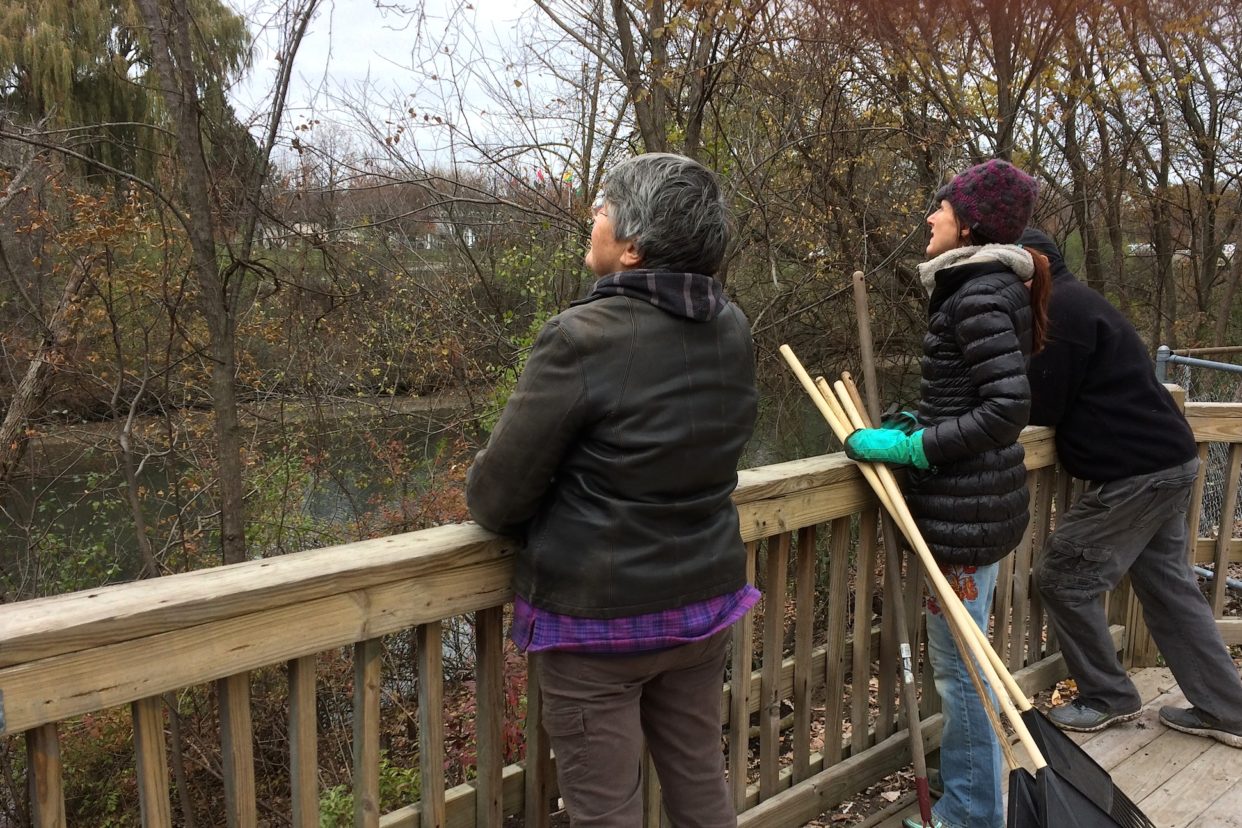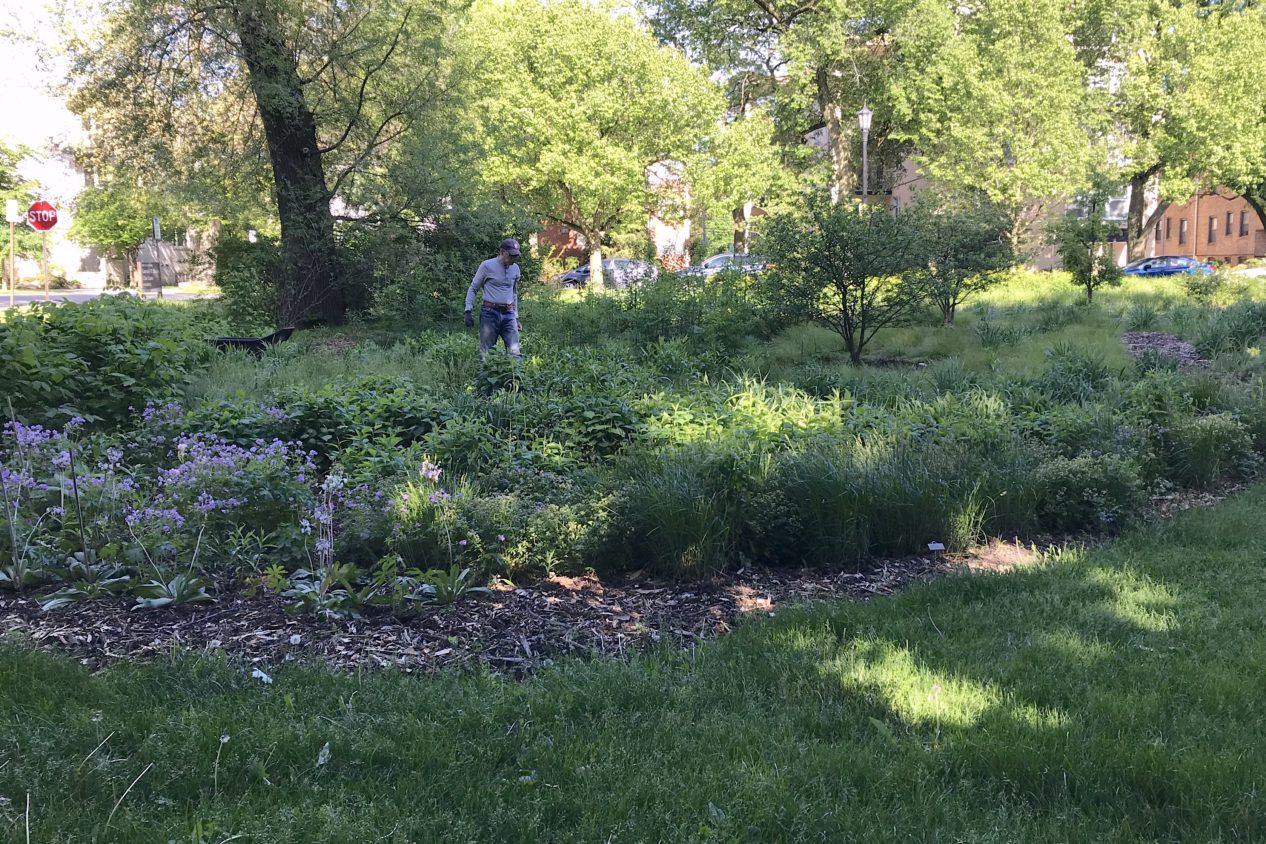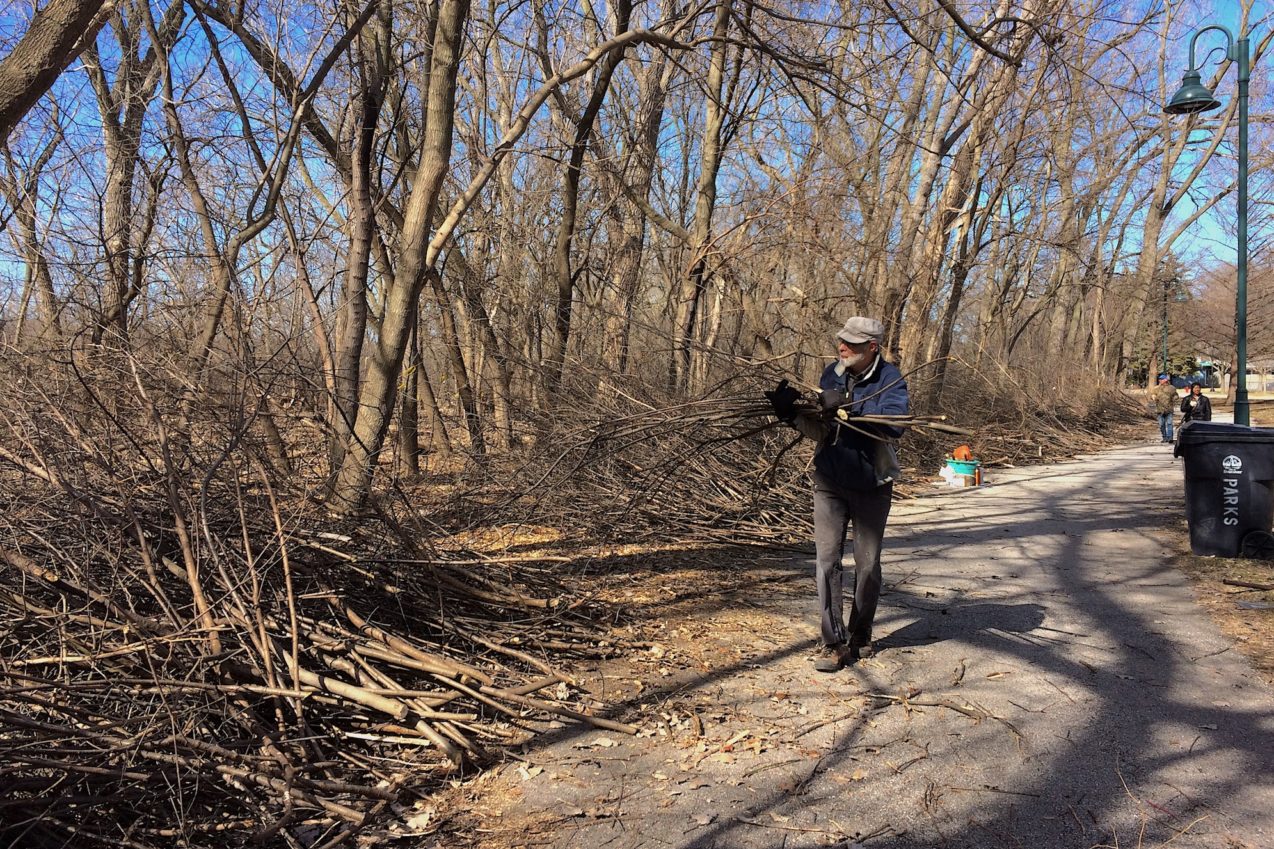We spend more time removing plants than adding them these days. In a disturbed site like the banks of the North Shore Channel, invasive plants thrive. Until our newly planted native plants get the upper hand, weeding will remain one of our most time-consuming tasks.
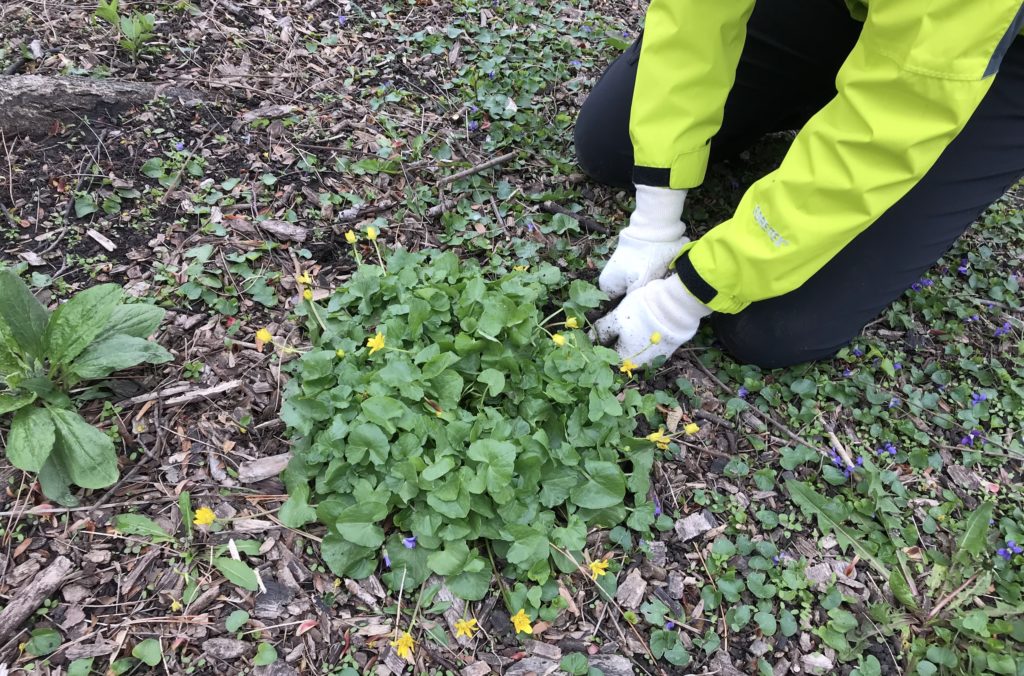 This spring, volunteers with Friends of the Chicago River helped us grub out lesser celandine and pull garlic mustard at the Ladd Arboretum.
This spring, volunteers with Friends of the Chicago River helped us grub out lesser celandine and pull garlic mustard at the Ladd Arboretum.
As the season moves on, a succession of other plants have taken center stage, challenging our plant ID skills. Non-native thistle, sweet clover, and burdock are just a few of the plants we try to remove. Burdock has what’s been described as a “robust nature,” and herbivores avoid its bitter foliage, so our resident deer and rabbits can’t contain it.
Aggressive plants aren’t necessarily non-natives. Pokeberry is shooting up just now along a section of the slope that was dug up this spring to make room for new shrubs. Some pokeberry is welcome late-summer food for birds, but we try to confine it to areas lower on the slope so it doesn’t overwhelm the new roses, hazelnuts, and witch-hazels. Some other native plants that seem humble enough much of the year, like rough avens and stickseed, start to fill up open spaces by midsummer, and their burs and sticky seeds make them hard to handle.
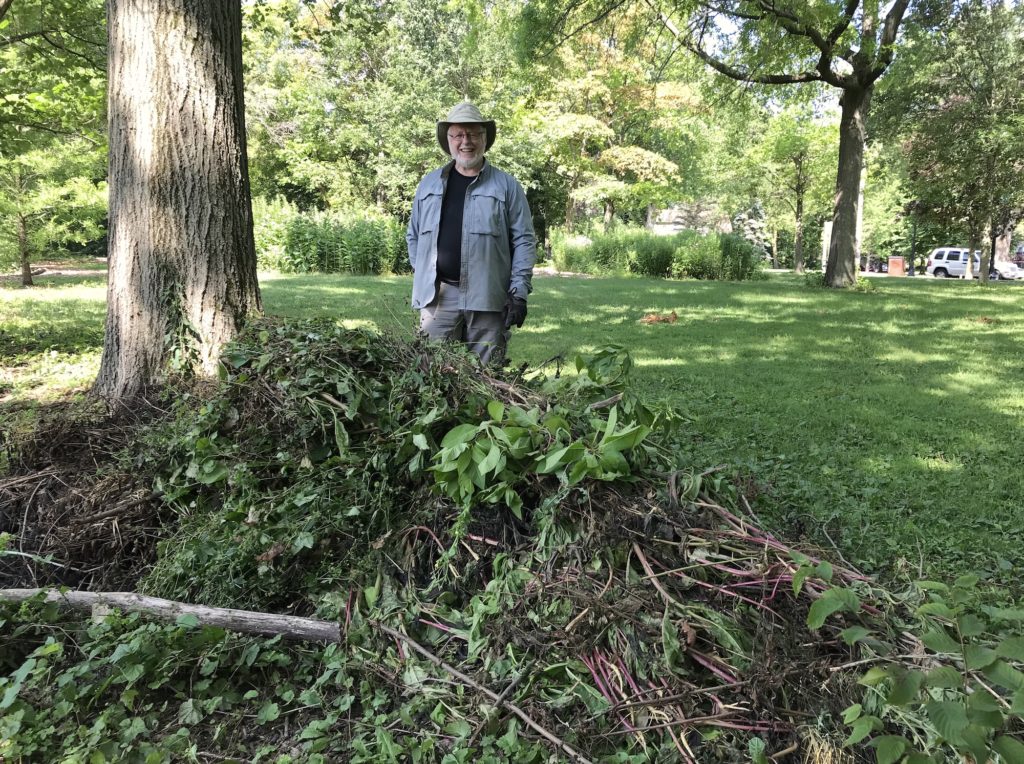 It’s hard work in the hot sun, but meanwhile the new, native plants are putting down roots, spreading their branches, and beginning to make themselves at home.
It’s hard work in the hot sun, but meanwhile the new, native plants are putting down roots, spreading their branches, and beginning to make themselves at home.
— Wendy Pollock
